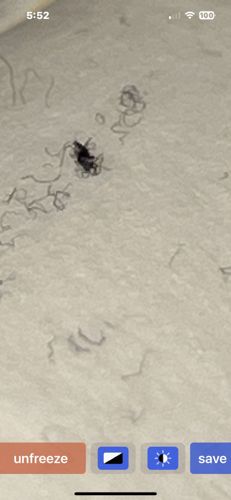It is difficult to definitively identify the exact species from the provided image due to its blurriness and distance. However, based on the general appearance (small, dark, possibly winged and somewhat elongated body), and the context of often being found indoors, this insect bears a resemblance to either a very small beetle (like a carpet beetle or spider beetle) or a fungus gnat/small fly. Without clearer details, providing a precise identification is challenging.
Scientific Name: Unknown (cannot be determined from the image)
Order & Family: Unknown (likely Coleoptera or Diptera, but not certain)
Size: Likely very small, perhaps 1-3 mm, given the perceived scale in the image.

Natural Habitat
Based on the image appearing to be indoors, potentially found in homes, often attracted to light, moisture, or specific food sources depending on the actual species.
Diet & Feeding
Highly dependent on species. If a beetle, it could be a scavenger (e.g., carpet beetle feeding on organic fibers, dried food), or if a gnat/fly, it might feed on fungi, decaying organic matter, or plant fluids.
Behavior Patterns
Again, highly dependent on species. Beetles might be slow-moving or play dead when disturbed. Fungus gnats and small flies are typically weak fliers and often seen near potted plants or damp areas.
Risks & Benefits
If it is a common household pest like a carpet beetle, risks include potential damage to fabrics, carpets, or stored goods. If it is a fungus gnat, it is generally harmless to humans but can be a nuisance and an indicator of overly wet soil in houseplants. Generally, small insects indoors are more of a nuisance than a direct risk, unless they are known vectors of disease or cause significant damage to property (e.g., termites, clothes moths). Benefits are negligible in an indoor setting; outdoors, even small insects play roles in decomposition or as food sources for other animals.
Identified on: 9/10/2025